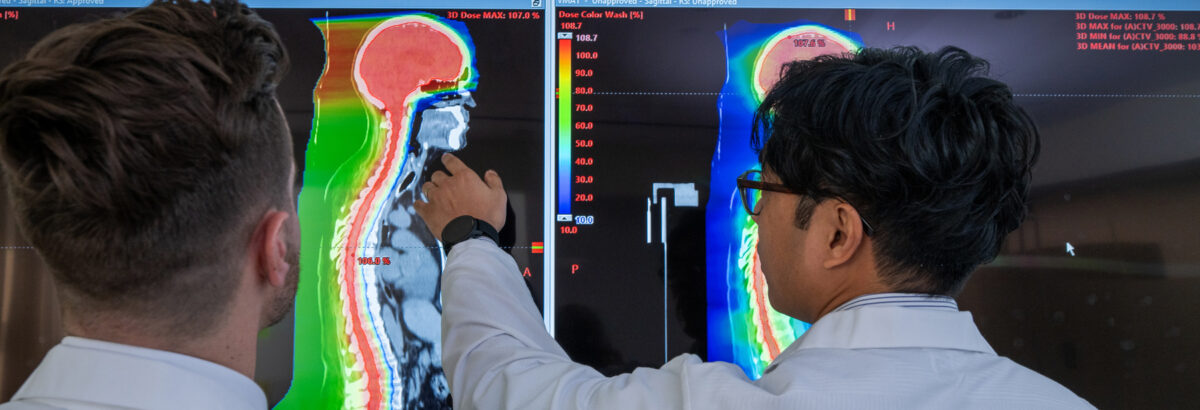Minimizing Impact To Surrounding Organs and Tissues
Sarcomas can occur in parts of the body—head and neck, pelvis, extremities, and spine, for example. Oftentimes, it is difficult or not safe to give a high enough dose of radiation to effectively control these tumors with conventional radiation therapy.
Proton therapy, on the other hand, can direct a high dose of radiation to the tumor with minimal impact on healthy surrounding organs and tissues. This is especially helpful for sarcomas, and in patients who have had their cancer recur after prior radiation therapy. Proton therapy can be an effective treatment for both soft tissue and bone sarcomas.
Sarcomas We Treat Include
- Angiosarcoma
- Chondrosarcoma
- Epithelioid sarcoma
- Ewing’s sarcoma
- Fibrosarcoma
- Gastrointestinal stromal tumor
- Leiomyosarcoma
- Liposarcoma
- Malignant peripheral nerve sheath tumor
- Osteosarcoma
- Pleomorphic sarcoma
- Rhabdomyosarcoma
- Synovial sarcoma
- Other sarcomas
From Proton Therapy to Kindergarten
Thomas was treated at a proton therapy center in New Jersey in the spring of 2019. Since opening its doors in the summer of 2019, the New York Proton Center is making this advanced form of cancer treatment more accessible – and giving patients in New York and the surrounding region new hope in their fight against cancer.
Pencil Beam Scanning at the New York Proton Center
Patients at our center receive pencil beam scanning, a highly sophisticated and the most modern form of proton therapy. It uses an extremely narrow beam of protons to “paint” the intended radiation dose onto the tumor. The technology can target specific parts of the tumor with different radiation dose levels, while better protecting the surrounding normal tissues from irradiation.
Not All Proton Therapy Is Created Equal
Many other proton centers use “volumetric” beams that deliver a fixed quantity of energy to the entire tumor. But the pencil beam scanning technology at the New York Proton Center delivers “intensity-modulated proton therapy,” or IMPT.
Widely considered the most advanced form of proton therapy, IMPT can target different parts of the tumor with different radiation dose levels based on the prescription and the tumor’s exact location, while better protecting the surrounding normal tissues from irradiation. That’s particularly valuable when treating the most complicated tumors, those residing in the fissures of the head, neck and skull base.




